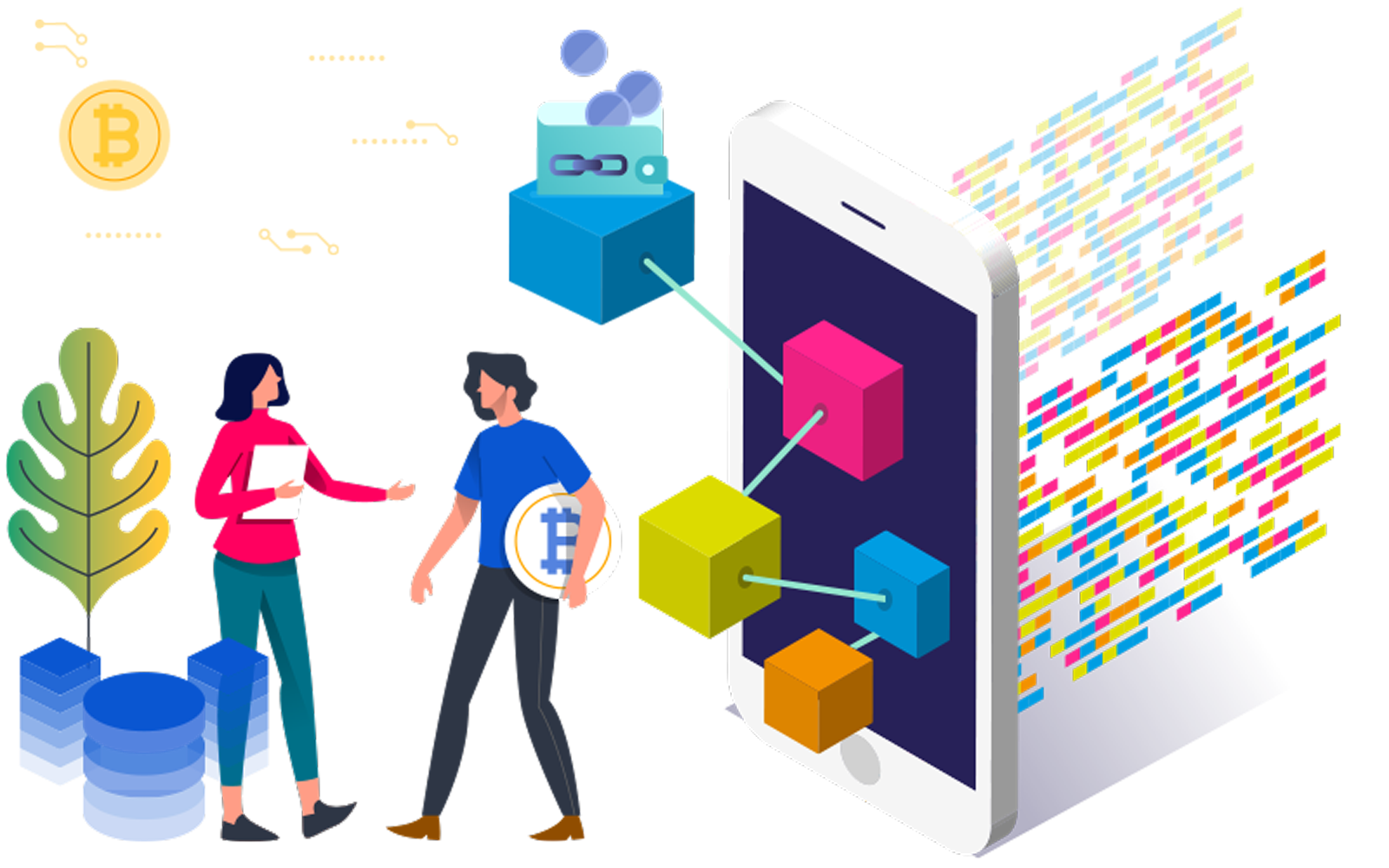Numerous sectors have seen a change thanks to blockchain technology, and its impact is only growing. New trends that will influence the development of blockchain apps in the future are starting to emerge as we approach 2024. The main blockchain app development trends for 2024 are examined in this article.
Overview of Blockchain Application Development
The process of developing apps that make use of blockchain technology is known as blockchain app development. These programs can be as basic as decentralized apps (dApps) or as sophisticated as platforms that oversee supply chains, smart contracts, digital identities, and other things. Blockchain’s distinct qualities—transparency, immutability, and decentralization—make it an effective instrument for developing safe and effective digital solutions.
Important Development Trends for Blockchain Apps
1. Growing Use of Layer 2 Solutions
Blockchain networks are intended to be more scalable through the use of Layer 2 technologies. Scalable solutions are becoming increasingly important as blockchain technology gains popularity. Layer 2 solutions execute transactions off the main blockchain (Layer 1) and then record the results back onto it, allowing for quicker transactions and reduced costs. Examples of these solutions include Rollups and Plasma. We may anticipate that more blockchain developers will use these techniques in 2024 to increase the effectiveness and scalability of their products.
2. Decentralized Finance’s (DeFi) Growth
For the past several years, decentralized finance, or DeFi, has been a significant development in the blockchain industry. DeFi is anticipated to expand much further in 2024 as more advanced financial services and products are created on blockchain networks. Decentralized lending and borrowing, yield farming, and decentralized exchanges (DEXs) are among of the innovations in DeFi. DeFi protocols’ popularity will fuel the need for more user-friendly and safe blockchain applications.
3. Blockchain and AI Integration
Blockchain technology and artificial intelligence (AI) are two of the most revolutionary technologies of our day. We anticipate seeing a higher level of these technologies’ integration in top blockchain app development company by 2024. Blockchain apps may benefit from AI by having better automation, fraud detection, and data analysis. AI algorithms, for example, may be used to examine blockchain network transaction patterns, assisting in the detection of questionable activity and enhancing security.
4. Non-Fungible Token (NFT) Growth
Non-Fungible Tokens (NFTs) are becoming increasingly popular, especially in the entertainment, gaming, and art sectors. On blockchain networks, NFTs stand for distinct digital assets that may be purchased, sold, and exchanged. It is anticipated that NFT use would grow outside of these locations by 2024. In order to manage and trade NFTs, blockchain software developers will need to concentrate on building more reliable and adaptable platforms that are safe, scalable, and easy to use.
5. Improved Security Options
Blockchain technology is no different from the digital world in which privacy has long been a major problem. There will be a big effort in 2024 to create blockchain apps with improved privacy features. Technologies that enable transaction verification without disclosing sensitive information, such as Secure Multi-Party Computation (SMPC) and Zero-Knowledge Proofs (ZKPs), are becoming more and more popular. Developers of blockchain apps will use these privacy-preserving solutions more often in order to safeguard user data while upholding security and transparency.
6. Blockchain Solutions for Enterprise
Blockchain has enormous promise for corporate applications, even though it first acquired notoriety through cryptocurrencies like Bitcoin and Ethereum. More companies will use blockchain technology in 2024 to streamline processes, increase transparency, and cut expenses. Blockchain usage will increase in industries including banking, healthcare, and supply chain management. The development of blockchain apps will concentrate on producing enterprise-grade products that are simple to connect with current systems, scalable, and secure.
7. Cooperation Across Chains
The incompatibility of several blockchain networks is one of the issues confronting the blockchain ecosystem. Cross-chain interoperability is the capacity of several blockchain networks to exchange messages and engage in mutual interaction. 2024 will see a significant emphasis on creating solutions that allow different blockchains to work together seamlessly. This objective is already being worked toward by projects like Chainlink, Cosmos, and Polkadot, and additional developments in this field should lead to more linked and diverse blockchain applications.
8. The emergence of autonomous decentralized organizations, or DAOs
Decentralized Autonomous Organizations (DAOs) are entities that are not subject to traditional management systems, but rather to smart contracts on the blockchain. A more transparent and democratic decision-making process is made possible by DAOs. We anticipate a sharp increase in the development and use of DAOs in a number of industries by 2024. Blockchain app developers should concentrate on creating the frameworks and instruments—such as incentive programs, voting systems, and governance structures—necessary to enable DAOs.
9. Green blockchain and sustainability
Sustainability will become increasingly important as the environmental effects of blockchain technology, especially proof-of-work (PoW) networks, are examined. More work will be put into creating environmentally friendly blockchain solutions in 2024. Using proof-of-stake (PoS) consensus techniques, which use a lot less energy than proof-of-work (PoW) procedures, is one example of this. The job assigned to blockchain app developers will be to produce more energy-efficient apps and look for methods to reduce the carbon footprint of blockchain networks.
10. Better User Interface (UX)
Any application’s ability to succeed, including blockchain apps, is largely dependent on the user interface. Enhancing the user experience (UX) of blockchain apps to make them more approachable and intuitive will be a major priority in 2024. This include streamlining the onboarding procedure, improving wallet and decentralized exchange usability, and offering improved customer assistance. To draw and keep users, blockchain app developers must give UX design top priority.
Also Read : How Long Does It Really Take to Create a Blockchain App in 2024?
Obstacles in the Development of Blockchain Applications
Although the creation of blockchain apps appears to have a bright future, developers will face a number of obstacles:
The ability to scale
Scalability of blockchain networks becomes a major concern as they expand. Sharding and layer 2 solutions are two strategies being employed to deal with this issue. It is still difficult to achieve large scalability without sacrificing decentralization and security, though.
Security In blockchain applications, security is crucial. Even with blockchain technology’s built-in security measures, attacks and weaknesses can still occur. To guard against any attacks, developers must maintain vigilance and update their security procedures on a regular basis.
Adherence to Regulations
The regulatory environment surrounding blockchain technology is continually changing. It can be difficult to navigate this environment, particularly for applications that deal with financial transactions or private information. Developers are responsible for making sure their apps abide by any rules and regulations and for keeping up with any changes to the requirements.
Cooperation
One major problem is achieving smooth interoperability across various blockchain networks. Although there has been some progress, there is still much work to be done to guarantee that blockchain apps can communicate with one another on various platforms with ease.
In Conclusion
2024 is predicted to be a pivotal year in the history of blockchain app development. Blockchain technology will continue to transform several sectors with improvements in scalability, privacy, interoperability, and user experience. Developers must embrace these trends and solve the related issues if they hope to stay ahead of the curve as decentralized finance, NFTs, DAOs, and business blockchain solutions gain popularity. By doing this, they will be able to develop cutting-edge and significant blockchain applications that will propel digital innovation in the future.





